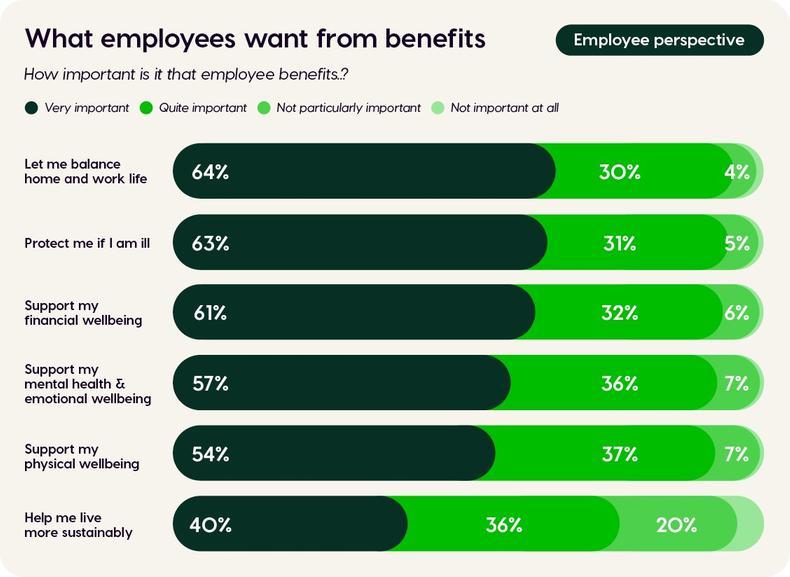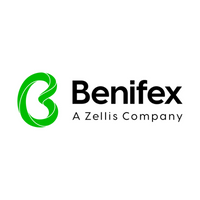The CPO perspective: How to ensure reward and benefits keep pace with changing employee expectations
Benefex’s 2024 research report, The Expectation Exponential, shows the challenge of keeping pace with evolving employee expectations has intensified in the last 12 months.
The report reveals a widening disconnect between employers and employees when it comes to perceptions about the quality of employee experience being delivered by organisations. While HR and reward professionals feel they are making progress, employees have a different view. Nearly two-thirds, 64%, of HR and reward professionals say their organisation’s employee experience is ‘excellent’ – but only 20% of employees agree.
Four-fifths, 81%, of employees say their experience at work is more important than it was a year ago – and, outside of salary, the number one area where employee expectations have increased in the last 12 months is benefits.
3 ways employee expectations of reward and benefits have changed over the last 12 months – and what to do about it
1. Employees want more personalisation, choice and flexibility in benefits
Employees are looking for greater flexibility in their choice of benefits. Nearly half, 48%, cite this as the number one way their benefits could be improved. They want to be able to make these choices at any time throughout the year. They also want benefits that are relevant to them. Only 22% of global employees feel that benefits are very flexible and allow them to choose the ones that are most important to them.
Most organisations are attempting to deliver by adding a greater range of benefits so employees can choose those that matter most to them. More employers are introducing benefit allowances to meet the changing needs of their people and looking to technology and automation to create more tailored and personalised experiences. This is a significant area of opportunity for employers, with only 18% of employees globally rating the tech they use to access benefits and perks as excellent.
Practical tip: Communication is key. Employee feedback often shows that people aren’t aware of the range of benefits available to them. As well as sharing regular communications with employees, use technology to bring all benefits together in one place and elevate benefits out of the annual selection window. This will help employees to more easily understand what’s on offer and take suitable action. At the moment more than a third (38%) of employees want more support in making better benefits choices.
2. Employees increasingly see benefits and wellbeing as interlinked
Our research shows that, more than ever, employees recognise the correlation between benefits available to them and aspects of their wellbeing. The cost-of-living crisis has meant employees have become increasingly focused on benefits to support their financial wellbeing and for protection against the impact of illness and injury.

People expect employee benefits to enhance their wellbeing; 90% of employees say it’s important that their benefits protect them if they get sick, help them to achieve work-life balance and support their financial, physical and emotional wellbeing. As a result, 40% of global employers say the main way they’re evolving employee benefits in the next two years is by increasing their focus on employee wellbeing.
Practical tip: Be focused and consistent. There are so many areas in which HR and Reward leaders can support employee wellbeing and experience that it can feel overwhelming. So, zone in on two or three areas to make a tangible difference.
3. Employees look for benefits that algin with values and purpose
Employees are looking for organisations that support their values. When evaluating employers, 51% of employees say high ethical standards are very important, 44% say culture is very important, and DE&I (39%), and a commitment to sustainability (36%) are also on their list.
Benefits are a tangible way for employers to show their people what they’re doing to support them, the wider community and the environment. As a result, it’s a strategic focus for many employers; 91% say benefits can help align employee values with organisational purpose. That aim is the top way employers are planning to evolve their benefits over the next two years.
Practical tip: Use your organisation’s culture and values to guide you on what areas to invest in next. For example, if sustainability is central to your values, consider implementing green benefits such as tree planting and electric vehicles (EVs). If you’re focused on creating a truly inclusive culture, consider benefits such as life stage health support and ensure they are flexible and accessible. Within your focus areas, ask how you can personalise what you offer to deliver greater impact.
Get your global analysis of the employee experience
Informed by more than 2,000 interviews with employers and employees across four continents, The Expectation Exponential, looks at what employees really want from reward and benefits, and what HR and Reward teams are working on to deliver. Get your copy here.
Supplied by REBA Associate Member, Benifex
The home of award-winning employee benefits, reward, recognition, & communications.








